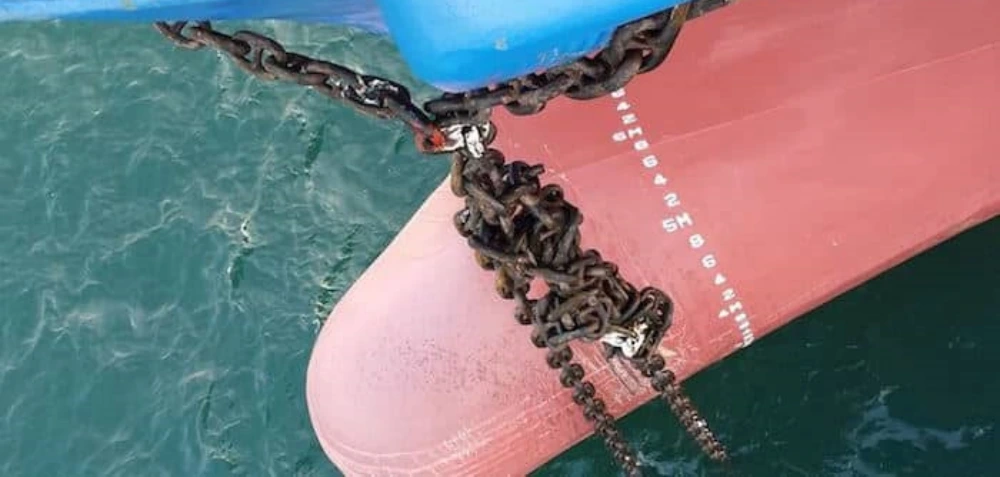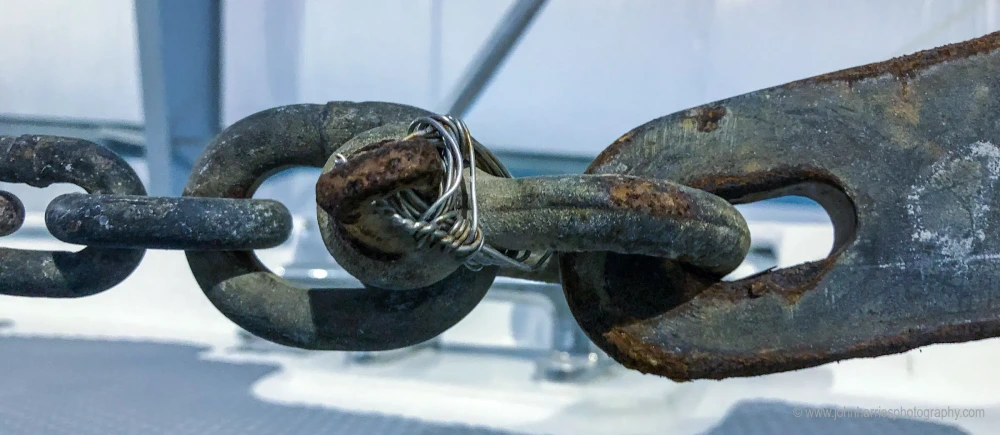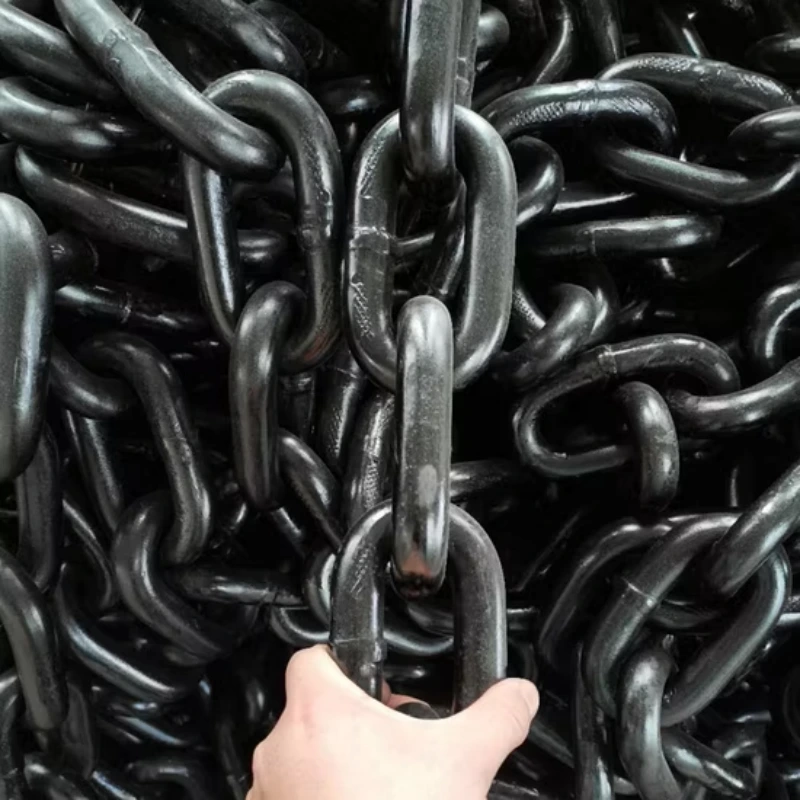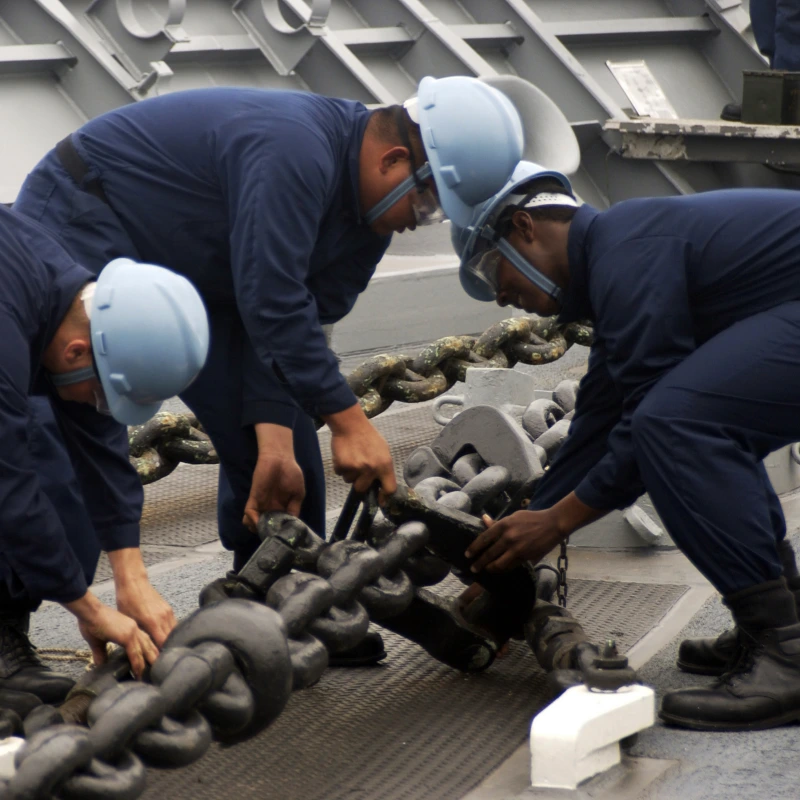When you spot a twisted anchor chain, you want a fast and safe fix. Twisting can happen for many reasons: rough sea conditions, strong currents, or even the way your windlass works. Sometimes, your boat swings at anchor and the chain gets tangled.
You might notice the links look kinked or the chain jumps out of the gypsy. This can weaken the chain and put your boat at risk. If you’re wondering how to fix twisted anchor chains, you’ll find that Powerful Machinery’s anchor chains, especially studless anchor chains, make the process easier and safer.
Key Takeaways
Always prioritize safety when fixing a twisted anchor chain. Secure your boat, wear gloves, and have a friend assist you.
Inspect the chain for kinks or twists as it comes up from the water. Early detection helps prevent bigger issues.
Let the chain run out into deep water to untwist it effectively. This method allows the chain to realign naturally.
Regularly check and maintain your anchor chain to prevent twists. Clean it after trips and inspect for wear.
Use a high-quality swivel to connect your anchor to the chain. This helps prevent twists and keeps your anchoring system smooth.
How to Fix Twisted Anchor Chain?
Quick Steps

If you find yourself dealing with a twisted anchor chain, don’t worry. You can fix it quickly and safely by following these steps. This method works well for Powerful Machinery’s anchor chains, especially the flexible studless anchor chains.
Check for Safety First
Before you start, make sure your boat is secure. Ask a friend to help and keep an eye on your surroundings. Always wear sturdy work gloves to protect your hands from sharp edges.Inspect the Chain
Look at the chain as it comes up from the water. If you see kinks or the chain jumps out of the gypsy, you probably have a twist.Let Out the Chain in Deep Water
One of the most effective ways to untwist a chain is to let it run out into deep water. If possible, remove the gypsy or fit a part tube (like a 110mm PVC pipe) over the gypsy. Let the chain run freely into the water or into your dinghy.To untwist a twisted anchor chain that is jammed in the gypsy, remove the gypsy or fit a part tube over the gypsy (110mm PVC will do) and let the chain run out into deep water or your dinghy. Refitting the gypsy and running the chain back in will help untwist it.
Run the Chain Back In
After the chain has run out, refit the gypsy and slowly bring the chain back in. This process helps the chain untwist itself as it realigns.Flake the Chain on Deck
If you can’t let the chain out in deep water, try flaking it on the deck. Lay the chain out in straight lines and gently shake out the twists by hand.Check Alignment
When you deploy or retrieve the anchor, keep the chain aligned with the gypsy. Mark the top side of the chain at intervals to help you keep track.Test the Chain
Once you finish, check that the chain runs smoothly through the windlass. If it still feels stiff or twisted, repeat the process.
Tip:
Always address a twist as soon as you notice it. Waiting can make the problem worse and harder to fix.
Common Mistakes to Avoid:
Failing to use a swivel can lead to twisting and jamming.
Ignoring a twist makes it harder to weigh anchor later.
Trying to untwist the chain by force without proper technique.
Tools Needed
You don’t need a lot of fancy equipment to fix a twisted anchor chain. Here’s what you should have on hand:
Tool | Purpose |
|---|---|
Work gloves | Protect your hands from sharp chain edges |
110mm PVC pipe | Helps guide the chain off the gypsy |
Dinghy (optional) | Catches the chain if you let it out |
Marker or tape | Marks the chain for alignment |
Friend/helper | Provides extra safety and lookout |
Always keep these tools ready on your boat. They make the process of how to fix twisted anchor chains much easier and safer.
If you use Powerful Machinery’s studless anchor chain, you’ll find it’s lighter and more flexible, which makes handling and untwisting much simpler.
Remember:
It’s always better to have a friend help and keep a lookout while you work on the chain.
Now you know how to fix a twisted anchor chain using practical steps and the right tools. With a little practice, you’ll handle chain twists quickly and confidently every time you anchor.
Untwisting Methods

Manual Techniques
Sometimes, you can solve a twisted anchor chain problem with just your hands and a bit of patience. Start by laying the chain out on the deck. If you use a Powerful Machinery studless anchor chain, you’ll notice how much easier this feels. The chain’s flexibility lets you shake out twists without much effort.
Grab the chain at both ends and gently work out the kinks. If you see a stubborn twist, try rotating the chain in the opposite direction. You can also let the chain hang freely over the side of your boat. The weight of the chain helps gravity do the work, slowly untwisting itself as it dangles.
If you have a helper, ask them to hold one end while you work on the other. This teamwork makes the process safer and faster. Always wear gloves to protect your hands. If you’re wondering how to fix a twisted anchor chain without any fancy tools, this method is your go-to solution.
Tip: Manual untwisting works best when the chain is not under heavy load and you have enough space to lay it out.
Mechanical Solutions
When manual methods don’t cut it, mechanical solutions step in. Most boats use a windlass to handle anchor chains. These machines make untwisting much easier, especially for longer or heavier chains.
Powerful Machinery’s anchor chains, including studless types, run smoothly through windlasses, reducing the risk of jams.
Here’s a quick look at common windlass types and how they operate:
Type of Windlass | Power Source | Operation Characteristics |
|---|---|---|
Horizontal Windlass | Manpower, Electric, Hydraulic | Lifts and drops anchors, can handle two anchors at once. |
Vertical Windlass | Electric, Hydraulic, Steam | Fits well on boats with limited deck space, often seen on warships. |
Double-Sprocket Windlass | Electric, Hydraulic | Great for small and medium boats, it offers efficient anchor handling. |
Single-Sprocket Windlass | Electric, Hydraulic | Best for larger ships, allows for versatile and powerful operations. |
To untwist the chain, let it run out using the windlass, then slowly retrieve it. The chain will often untwist as it moves through the gypsy. If you use a studless anchor chain, you’ll find it glides through the windlass with less resistance, making the job even easier.
Note: Always monitor the chain as it moves through the windlass to catch any new twists early.
Safety Tips
Chain Handling
When you handle an anchor chain, you need to stay alert. Twisted chains can create hidden dangers. If you use Powerful Machinery’s studless anchor chain, you get more flexibility and easier handling, but you still need to follow safe practices.
Here are some common hazards you might face:
Twisted chains put extra bending and twisting stress on the links. This can make the chain weaker.
Sudden jerks can stretch the chain. You might lose control, and the chain could fail under load.
High stress on the links can bend them. This can damage the chain and make it unsafe.
You should always wear sturdy gloves. Keep your hands and feet clear of the chain as it moves. Never try to untwist a chain by force. Instead, use slow and steady movements. If you work with a friend, talk to each other and agree on every step before you start.
Tip:
Always check the deck for tripping hazards before you begin. A clear workspace keeps you safe and helps you focus on the task.
Injury Prevention
Accidents can happen fast when you handle heavy chains. Even experienced boaters can get hurt if they rush or lose focus. Take a look at some real-life incidents:
Date | Incident Description | Injuries Sustained |
|---|---|---|
01 April 2015 | A crew member’s fingers were caught and crushed while handling the anchor chain. | Two fingers were crushed between the shackle and the chain link. |
N/A | The worker fell through an opening while handling an anchor chain, resulting in multiple fractures. | Multiple fractures to the right leg and a broken rib. |
You can avoid these injuries by following a few simple steps:
Always keep your fingers away from moving parts.
Stand clear of the chain’s path.
Never step over a moving chain.
Double-check that all openings on deck are covered or marked.
If you feel tired or distracted, take a break. Your safety comes first every time you handle an anchor chain.
Preventing Twists with Powerful Machinery Chains
Using Swivels
If you want to keep your anchor chain running smoothly, using a swivel is a smart move. Swivels connect your anchor to the chain and let the chain spin freely. This helps prevent twists from building up as your boat swings with the wind or current.
When you use a high-quality swivel with Powerful Machinery anchor chains, you add an extra layer of protection against tangles.
Marine engineering studies show:
“The Acco galvanized swivel took eight complete twists in the chain before it started to turn, and the Mantus swivel took 6.5 turns. Given that typically skippers might be deploying three times the amount of chain we used in our test, it is obvious that several more turns—possibly three times as many—would be required for the bottom swivel to make any difference.”
So, while a swivel helps, you still need to check your chain for twists and use good anchoring habits. Swivels work best when paired with regular inspections and careful handling.
Best Practices
You can avoid most chain twists by following a few simple habits. Powerful Machinery’s studless anchor chains give you flexibility and easy handling, but you still need to care for them.
Perform routine inspections every month. Look for rust, bent links, or loose shackles.
Clean and rinse your chain after every long trip, especially after anchoring in saltwater.
Check shackles, swivels, and connectors often to make sure they stay in good shape.
Track and label your scope intervals. This helps you deploy and retrieve the right amount of chain.
Keep a log of all maintenance. This helps you spot wear before it becomes a problem.
When you deploy or retrieve your anchor, follow these steps for best results:
Position your boat and stop forward movement.
Lower the anchor as your boat drifts backward.
Let out enough chain and attach a snubber or bridle.
Back down gently to set the anchor.
Secure the chain so it cannot slip.
Studless anchor chains from Powerful Machinery maintain torque balance and absorb shock loads. This keeps your anchoring system stable and helps prevent twists over time. If you ever wonder how to fix a twisted anchor chain, these habits and products make prevention much easier.
Troubleshooting
Persistent Twists
Sometimes, no matter how careful you are, your anchor chain keeps twisting. You might notice the chain feels stiff or keeps jamming in the windlass. If you’ve tried all the manual and mechanical methods, but the problem returns, it’s time to dig deeper.
Start by checking the basics. Look for worn or bent links. Examine your swivel and shackles. Sometimes, a faulty swivel or a damaged link causes repeated twists. If you use a Powerful Machinery studless anchor chain, you already have an advantage because it’s flexible and easy to inspect.
Here’s a quick checklist to help you spot stubborn problems:
Inspect every link for signs of wear or corrosion.
Test the swivel by spinning it with your hand.
Make sure the chain runs straight through the windlass.
Clean off any mud or debris that could cause snags.
Tip: If you see rust or damage, don’t ignore it. Small issues can lead to bigger problems at sea.
If you still can’t fix the twist, you might need professional help. Many marine service providers offer inspection, repair, and maintenance for anchor chains. They use special tools and testing methods to find hidden issues.
When to Get Help?
You don’t have to solve every anchor chain problem alone. Sometimes, calling in the pros is the safest choice—especially if you spot cracks, deep rust, or broken links. Professional services can handle everything from inspections to repairs and replacements.
Here’s a look at some common services you can find:
Service Type | Description |
|---|---|
Inspection Services | Load testing, stress analysis, corrosion checks, and certification. |
Repair Services | Welding, reconditioning, rust removal, and performance validation. |
Maintenance Services | Regular cleaning, testing, and re-galvanization of anchor chains. |
Replacement Services | Supplying new anchor chains and replacing damaged components. |
Windlass Inspection & Repair | Checking and fixing windlass systems for smooth operation. |
If you use Powerful Machinery anchor chains, you can also reach out to their team for advice or certified replacement parts. Don’t wait until a small twist becomes a big problem. Regular checks and timely repairs keep your anchoring system safe and reliable.
Remember: Your safety comes first. When in doubt, trust the experts to keep your boat secure.
Conclusion
Fixing a twisted anchor chain is simple when you follow the right steps and stay safe. You should inspect your chain after every trip, clean it, and check for damage.
Using Powerful Machinery’s certified anchor chains gives you extra peace of mind because they offer strength and reliability in tough conditions. Regular care and quick action help you avoid costly problems and keep your anchoring system working smoothly.
Stay proactive—routine checks and certified gear keep you and your boat safe every time you anchor.
FAQ
What causes an anchor chain to twist?
You might see twists if your boat swings at anchor, the windlass pulls unevenly, or you skip using a swivel. Sometimes, rough water or strong currents can also twist the chain.
How often should I check my anchor chain for twists?
Check your chain every time you anchor or retrieve it. Regular checks help you spot twists early and keep your anchoring system safe.
Can I use any swivel with my anchor chain?
You should always choose a high-quality, marine-grade swivel. Make sure it matches your chain size and strength. This helps prevent twists and keeps your setup reliable.
What should I do if the chain keeps twisting after fixing it?
Inspect the chain, swivel, and shackles for damage. Clean off any debris. If the problem continues, ask a marine professional for help.
Is Powerful Machinery’s studless anchor chain easy to untwist?
Yes! The flexible design makes it easier for you to handle and untwist. You can quickly shake out kinks or let the chain hang to untwist itself.


